How to ship automotive parts
How to ship automotive parts
Here's what you’ll find on this page:


















Shipping car parts
How do you ship a car hood? How much does it cost to ship tires and wheels? What’s the best way to ship large car parts like transmissions and engines? Shipping car parts has its challenges. You need a solid packing strategy, the right materials, and the right shipping service. You’re in the right place to find all three.
Prep to ship car parts: Here’s what you’ll need



Heavy-duty plastic wrap or bags



Foam padding or bubble packaging for wrapping parts



Packing peanuts or other cushioning material if you’re using a box



Packing tape



Stretch wrap (depending on the parts)



Corrugated box (depending on the size and shape of the parts)
- Heavy-duty plastic wrap or bags
- Foam padding or bubble packaging for wrapping parts
- Packing peanuts or other cushioning material if you’re using a box
- Packing tape
- Stretch wrap (depending on the parts)
- Corrugated box (depending on the size and shape of the parts)
NOTICE: This packaging information is provided to FedEx customers to help reduce loss or damage due to improper packaging. It is NOT intended to be a comprehensive guide for packaging items we accept for transit. We make no warranties, expressed or implied, regarding this information. Proper packaging is the sole responsibility of the shipper.
How to pack car parts for shipment
Car parts are expensive. Using the right packing methods is a crucial step in helping to prevent damage
during transit—and to protect those handling your shipment, too.
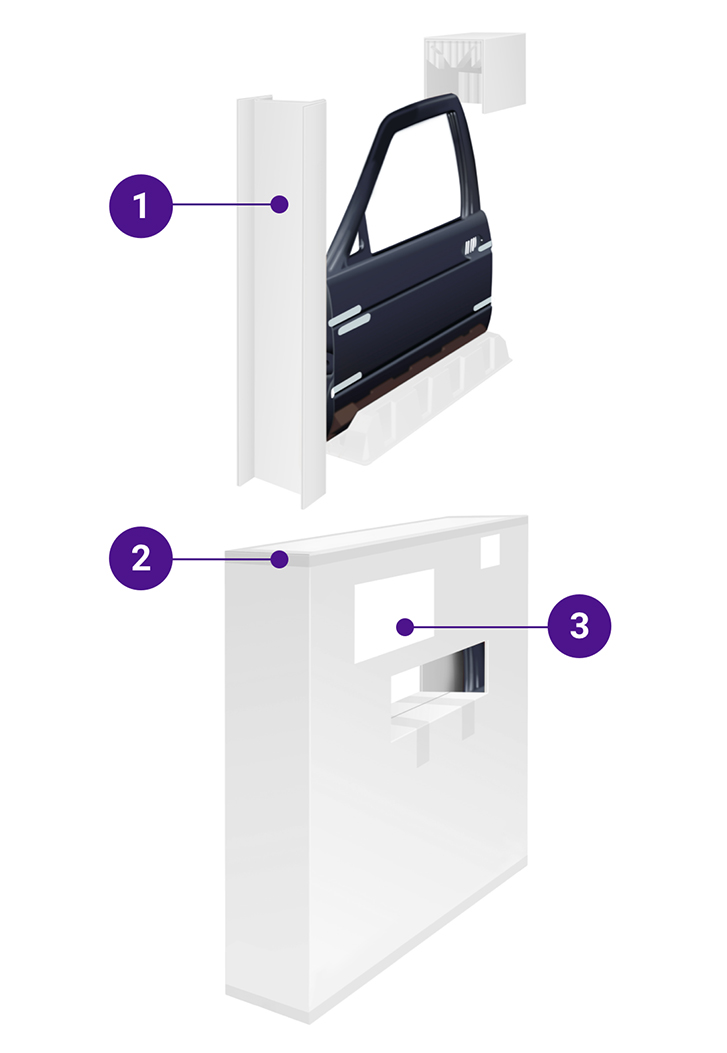


Pack car parts for protection.
Sharp, pointed edges on auto parts can damage the items’ packaging and other nearby packages. And most critically, they can injure package handlers. Because of that, the most important thing you can do when you’re packing parts is to pad or wrap them.
- Pad and cover pointed or sharp edges with corrugated cardboard, foam padding, or bubble packaging and tape all packaging securely in place.
- Wrap large parts like bumpers, molding, and sway bars with plastic film or bags. Then tape them securely.
- Whenever possible, ship parts inside a box with plenty of cushioning.
If you’re using a box, seal it.
Apply packing tape (at least 2" wide) around the edges of the top of the box. For extra support, add a strip of tape around the entire center of the box, securing both the top and bottom flaps. Marking your box with “This End Up” doesn't guarantee that it will remain that way while in transit. By placing your label on top, you increase the chances that it will be shipped in the preferred orientation.
Label your shipment.
If you’re using a box, place the label on top. If you’re shipping a part that can’t be boxed, wrap and pad the part and attach a FedEx nonconveyable tie-on tag to the item. Then stick the shipping label to the tie-on tag. To request tie-on tags or tire/crate labels, please call customer support or contact your sales representative.
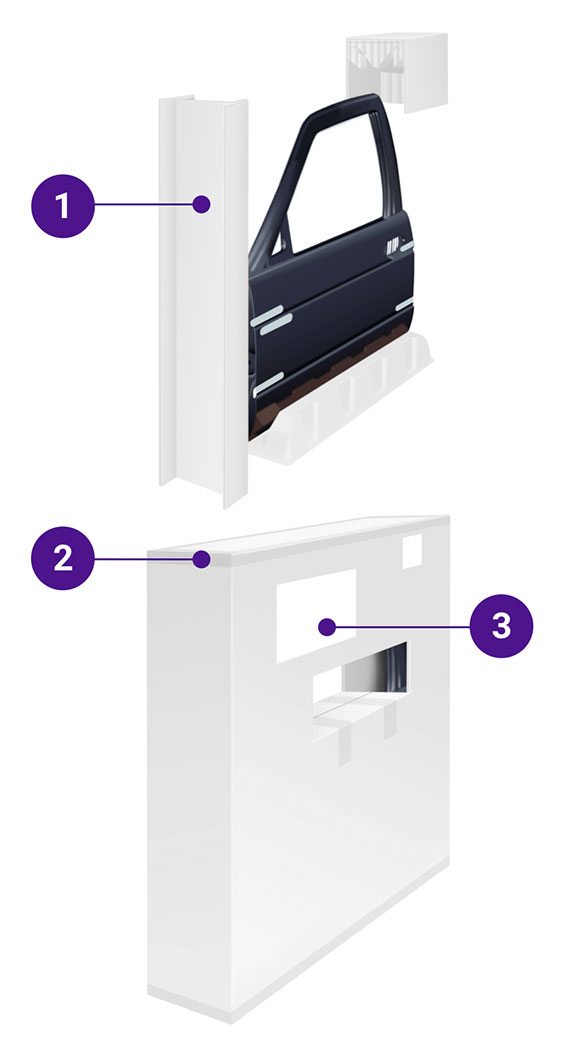


Drain your car parts before shipping
If you’re shipping a part that contains lubricant or other fluids, you must drain it before you ship or demonstrate that the shipment is leakproof in every possible orientation.



How to ship tires without rims
If you’re shipping tires, you don’t have to box them. You can place a tire/crate label directly onto the tread of the tire.
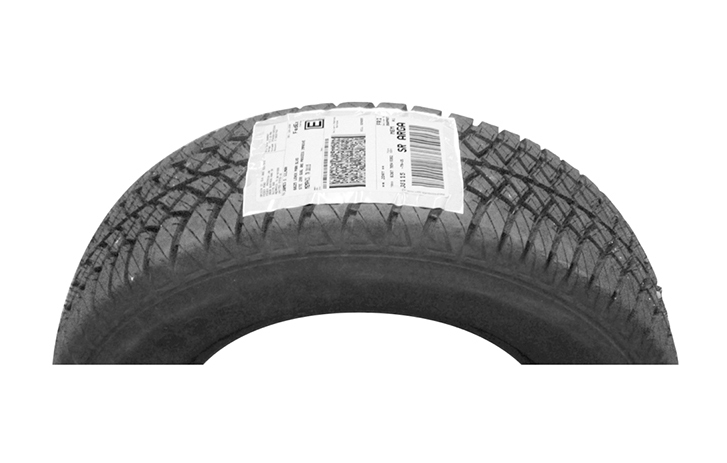


To order tire/crate labels, please call customer support or contact your sales representative.
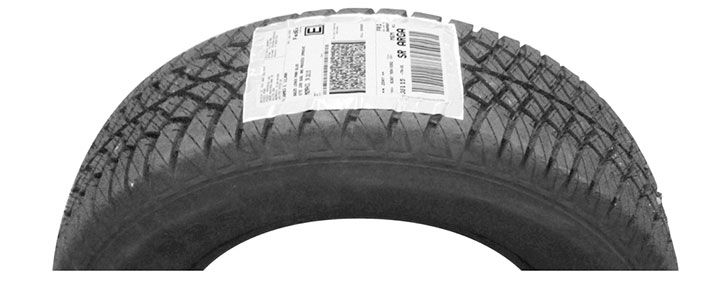


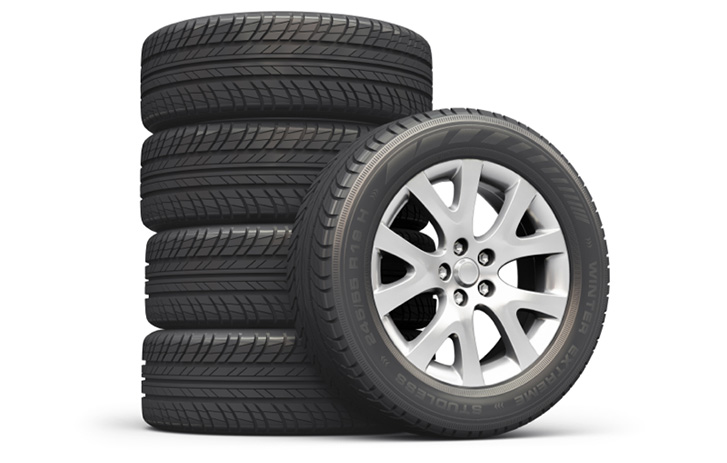


How to ship wheels, rims, and tires
To pack wheels or rims with tires attached in a box:
- Cushion the bottom of the box with 3" of bubble packaging.
- Place the tire inside the box.
- Cushion the sides and top of the box with 3" of bubble packaging or other cushioning material.
- Tape the box and apply a shipping label on top of the box.
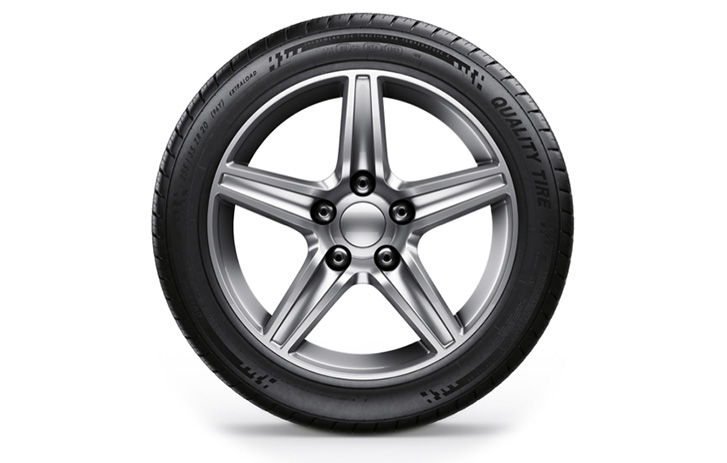


To ship wheels or rims with tires attached without packing them in a box:
- Lay the tire on a large sheet of cardboard. Trace around the wheel with a marker on the cardboard. Cut out the circle, which will give you a cardboard circle the same diameter as the wheel. Repeat the process to create two cutouts. Set them aside until step 3.
- Cover the entire wheel and tire with bubble packaging and tape it in place.
- Place the cardboard cutouts on the top and bottom of the wheel and tape them in place.
- Wrap the entire package in stretch wrap (including the tire, wheel, cardboard cutouts, and bubble packaging).
- Tape any exposed stretch wrap tails to the package.
- Apply your shipping label on a flat side of the wheel.
- Repeat for each wheel you need to ship.
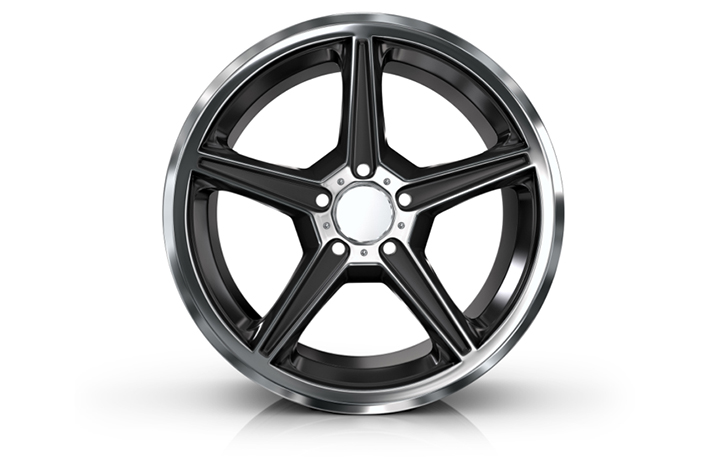


To ship wheels or rims without tires:
- Cushion the entire surface.
- Box chrome, painted, or decorative wheels that could be damaged by scratches or scuffs.
- You can ship non-decorative wheels without a box. Wrap them in heavy-duty plastic and tape them well.
How to ship a car hood
- Pad and cover pointed or sharp edges with corrugated cardboard, foam padding, or bubble packaging and tape all packaging securely in place.
- Cushion and box all exposed metallic surfaces that are could be scratched or dented.
How to ship a bumper
If the bumper is susceptible to scratches or dents, box or wrap it in heavy-duty plastic bags with plenty of protective padding. Then tape all the packaging in place securely. Be sure to use enough padding to fully cover sharp or pointed corners.
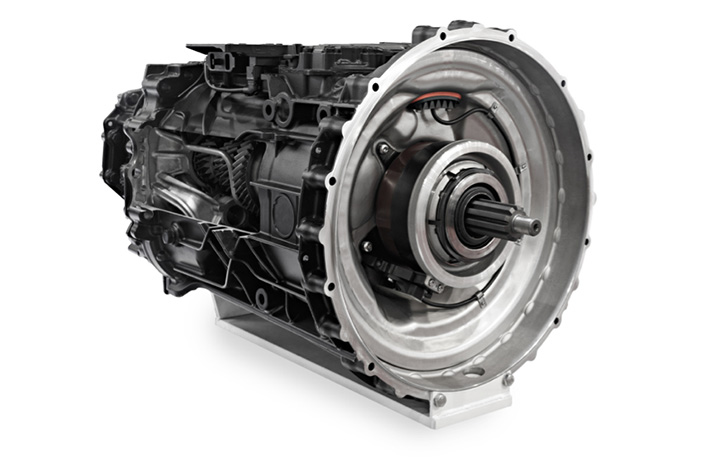


How to ship a transmission
Before shipping a transmission, drain all fluids out of it. Pack it in a heavy-duty plastic bag with absorbent padding to soak up any left-over fluid. If you’re using non-reusable packaging, secure the transmission to its pallet with bands, or block or brace it inside its corrugated container. If you use a reusable container, secure the transmission to the base with strapping.
How to ship car parts that weigh more than 150 lbs.
Shipments over 150 lbs. are considered freight. To ship, secure them to a forkliftable base that’s compatible with pallet-jack use.
See complete guidelines for packing and securing freight shipments.
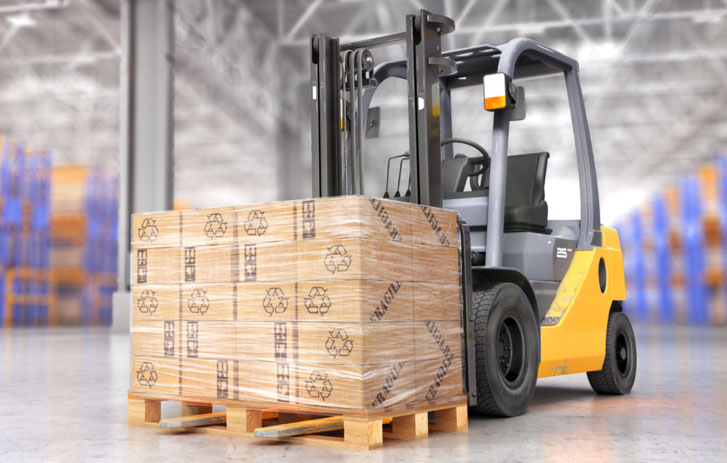


If it’s forkliftable, it’s freight.
If you’re using FedEx to ship an engine or transmission on a forkliftable base, your options are FedEx Express® Freight or FedEx Freight® services.



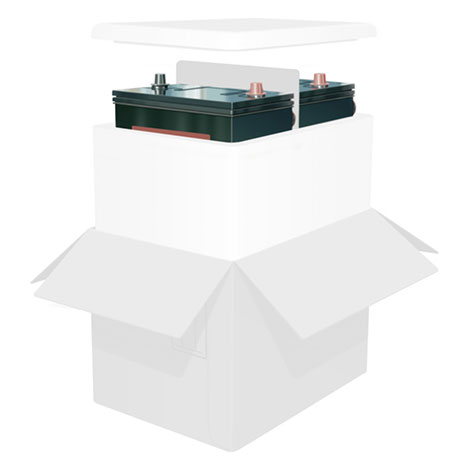


How to ship batteries, fuel tanks, or other parts that are dangerous or hazardous
Did you know? Some of the most frequently shipped auto and mechanical parts are considered dangerous goods and hazardous materials. These include airbags, aerosols (like paint and lubricants), batteries, engines, engine blocks with hazardous fuel, used fuel tanks, flammable paints, and touch-up paints. Check with the manufacturer for the Material Safety Data Sheet (MSDS) for detailed information on the product.
For more information on preparing dangerous goods/hazardous materials with FedEx Express or please call customer support; press “81” or say “dangerous goods,” then press “4” for the next available dangerous goods agent. (Outside the U.S., request to speak to a dangerous goods representative.) Refer to the current FedEx Service Guide for terms, conditions, and limitations applicable to FedEx® delivery services.
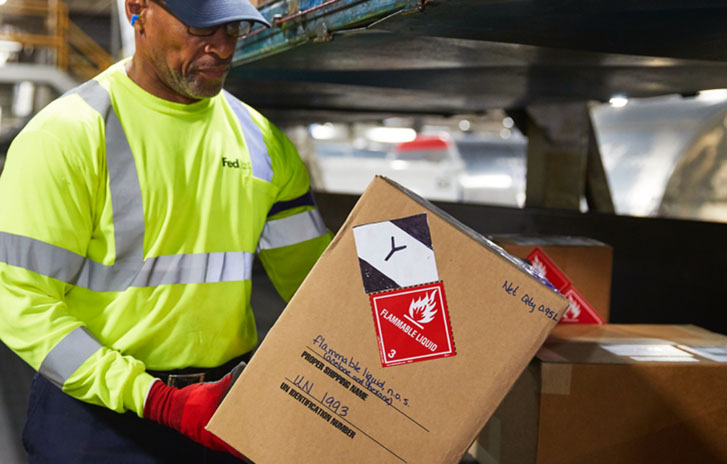


If you’re shipping dangerous goods or hazardous materials, you’re responsible for identifying, classifying, packaging, marking, labeling, and completing documentation for the shipment. If you’re the shipper, the Department of Transportation and the Federal Aviation Administration require you to have job-specific dangerous goods training before tendering dangerous goods to FedEx or another air carrier. See the 49 Code of Federal Regulations (49 CFR) 172.700 for complete details.
FedEx Express is required by law to report improperly declared or undeclared shipments of dangerous goods to the Department of Transportation. You may be subject to fines and penalties under applicable law.
See the FedEx Service Guide to learn more about restricted and prohibited items, dangerous goods, and more.
Questions? Please call customer support; press “81” or say “dangerous goods,” then press “4” for the next available dangerous goods agent.
Packaging pointers:
Use these tips to protect your auto parts
- Clean grease and residue from parts.
- Pad all sharp part edges, corners, and burrs including sheet metal and bare metal.
- Pad or cover precision-machined areas of parts, like threads and fittings.
- Use cushioning material and a sturdy shipping container to protect parts that could be dented, scratched, or scuffed.
- If you’re shipping parts without a box, place all labels on the side with the largest surface area, or on a flat surface for maximum adhesion. Don’t put labels on curved surfaces.
- Use FedEx tie-on tags, tire/crate labels, or plastic airbill pouches instead of wire tags. Learn more about creating and applying shipping labels.



Clean grease and residue from parts.



Pad all sharp part edges, corners, and burrs including sheet metal and bare metal.



Pad or cover precision-machined areas of parts, like threads and fittings.



Use cushioning material and a sturdy shipping container to protect parts that could be dented, scratched, or scuffed.



If you’re shipping parts without a box, place all labels on the side with the largest surface area, or on a flat surface for maximum adhesion. Don’t put labels on curved surfaces.



Use FedEx tie-on tags, tire/crate labels, or plastic airbill pouches instead of wire tags. Learn more about creating and applying shipping labels.
Shipping car parts: Choose from a fleet of options
When you’re deciding how to ship tires, wheels, transmissions, or any other auto part, the first thing to consider is the item’s weight. If it’s under 150 lbs., you have more options. If it’s over 150 Ibs., you’ll probably be sending it freight. Shipping costs for auto parts will vary based on the shipment’s weight, origin, and destination.
Shipping auto parts under 150 lbs.
To narrow down your shipping service options, consider how fast your shipment needs to arrive and where it’s going.
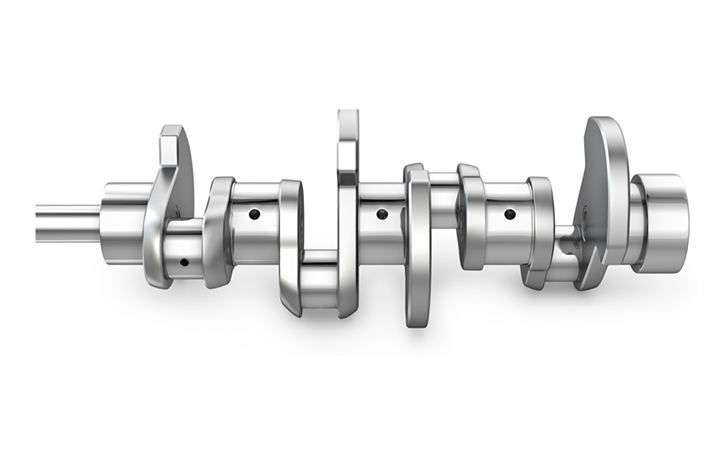


"I need to ship auto parts overnight."
If it needs to get there the next business day, choose one of these services from
FedEx Express:
- FedEx First Overnight®
- FedEx Priority Overnight®
- FedEx Standard Overnight®
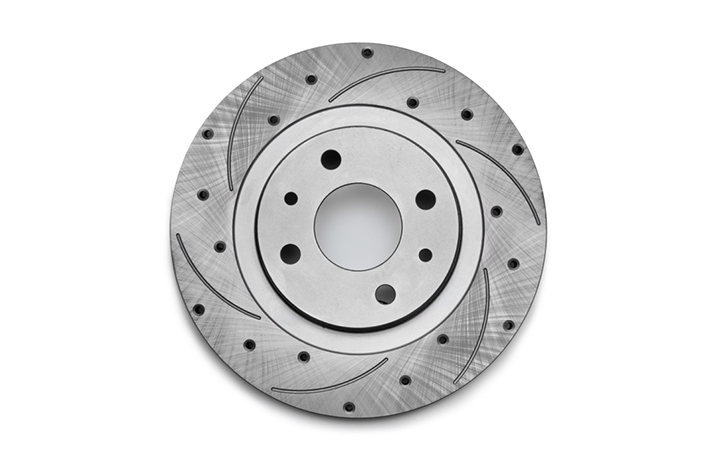


These services are appropriate for packages up to:
- 150 lbs.
- 119" in length
- 165" in length and girth
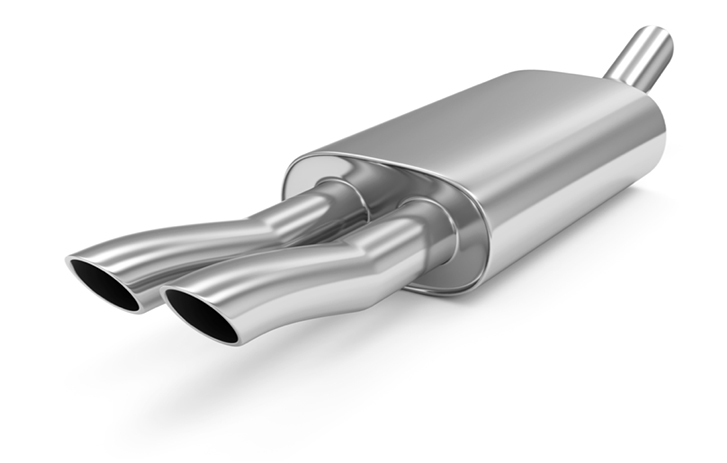


“I have more flexibility in my delivery schedule.”
If you’re looking for a cost-effective car parts shipping option that still arrives quickly, choose between these services:
- FedEx Ground® (to ship to businesses in 1–5 business days)
- FedEx Home Delivery® (to ship to residential addresses in 1–5 days including
weekends)
These services are appropriate for packages up to:
- 150 lbs.
- 108" in length
- 165" in length plus girth
“I need to ship auto parts outside the U.S.”
If you need to ship car parts to another country, you can choose from one of our international services. Be sure to check international shipping restrictions before you ship.
Most are appropriate for packages up to:
- 150 lbs.
- 108" in length
- 130" in length and girth
Shipping auto parts over 150 lbs.
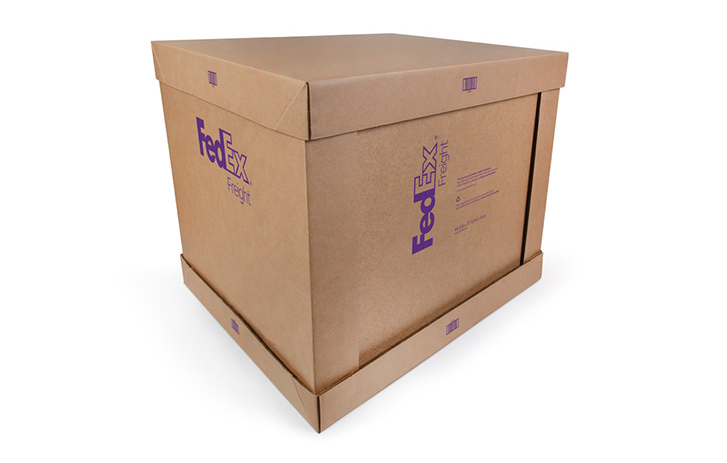


If your business is shipping engine blocks, transmissions, or other heavy car parts, freight shipping might be your best choice. Freight shipments have special packaging requirements, so learn about those before you ship. You can choose a freight option based on cost, speed, or other special shipping requirements.
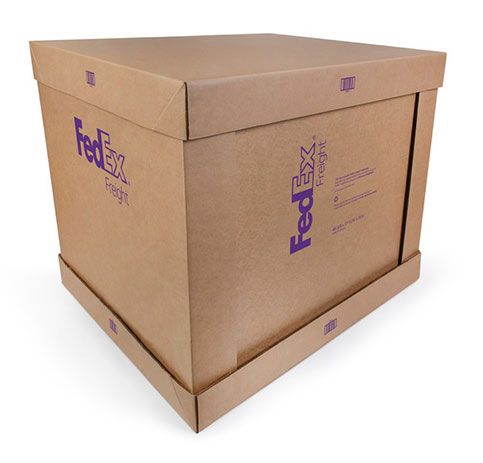


Ready to ship?






Use your FedEx account or log in as a guest. Have your shipping info ready and your credit card handy.






Have one of our couriers pick up your shipment from your home or office for a small fee.






Drop off your shipment at a FedEx® Drop Box, FedEx Office location, or other participating retailer.



Save big on business shipments
Open a free FedEx account and save up to 40% on
FedEx Express and up to 70% on FedEx Freight services.
Helpful resources
With FedEx Delivery Manager®, you can get tracking details and alerts about your automotive delivery, and even have it held for pickup at a secure location.
What’s the difference between oversized items and freight? Find out which shipment sizes fit into each category and get tips for shipping large items.
Shipping multiple auto parts to the same destination? See if multiweight pricing is right for your business. It’s automatic, and it can help you save.
Take shipment visibility and control to the next level with the FedEx Surround® monitoring and intervention suite. Use its predictive insights to make proactive decisions. Get your shipment prioritized. And let us intervene when necessary.
Want to learn more about shipping specialty items?
Check out our How-to Hub for guides and tutorials for shipping
everything from cupcakes to computers.
Want to learn more about shipping specialty items?
Check out our How-to Hub for guides and tutorials for shipping everything from cupcakes to computers.
FAQs about shipping car parts
What’s the best way to ship large car parts?
If your shipment weighs more than 150 lbs.—whether you’re shipping an engine, a transmission, or something else—it’s considered freight. Get detailed guidance on packing freight. Then read our step-by-step freight shipping guide.
How much does it cost to ship tires and wheels?
Looking for the cheapest way to ship wheels and tires? First, consider how fast they need to reach their destination. If they don’t need to get there right away, FedEx Ground or FedEx Home Delivery may be your best options. If speed matters most, overnight shipping might be a better choice. Get a quote for a shipment up to 150 lbs. If it weighs more than that, get a freight quote.
Can I ship auto parts without a box?
You can ship some parts without a box. The best way to ship large car parts like bumpers without using a box is by cushioning and wrapping them in plastic. You can also ship tires without outer packaging. See our packing steps for
automotive parts.
What kind of box can I use to ship car parts?
For non-freight shipments, we recommend heavy-duty corrugated boxes along with protective packaging like cushioning and padding. Make sure your box can support the weight of the parts. If you’re shipping freight, take a look at our freight packing guidelines.